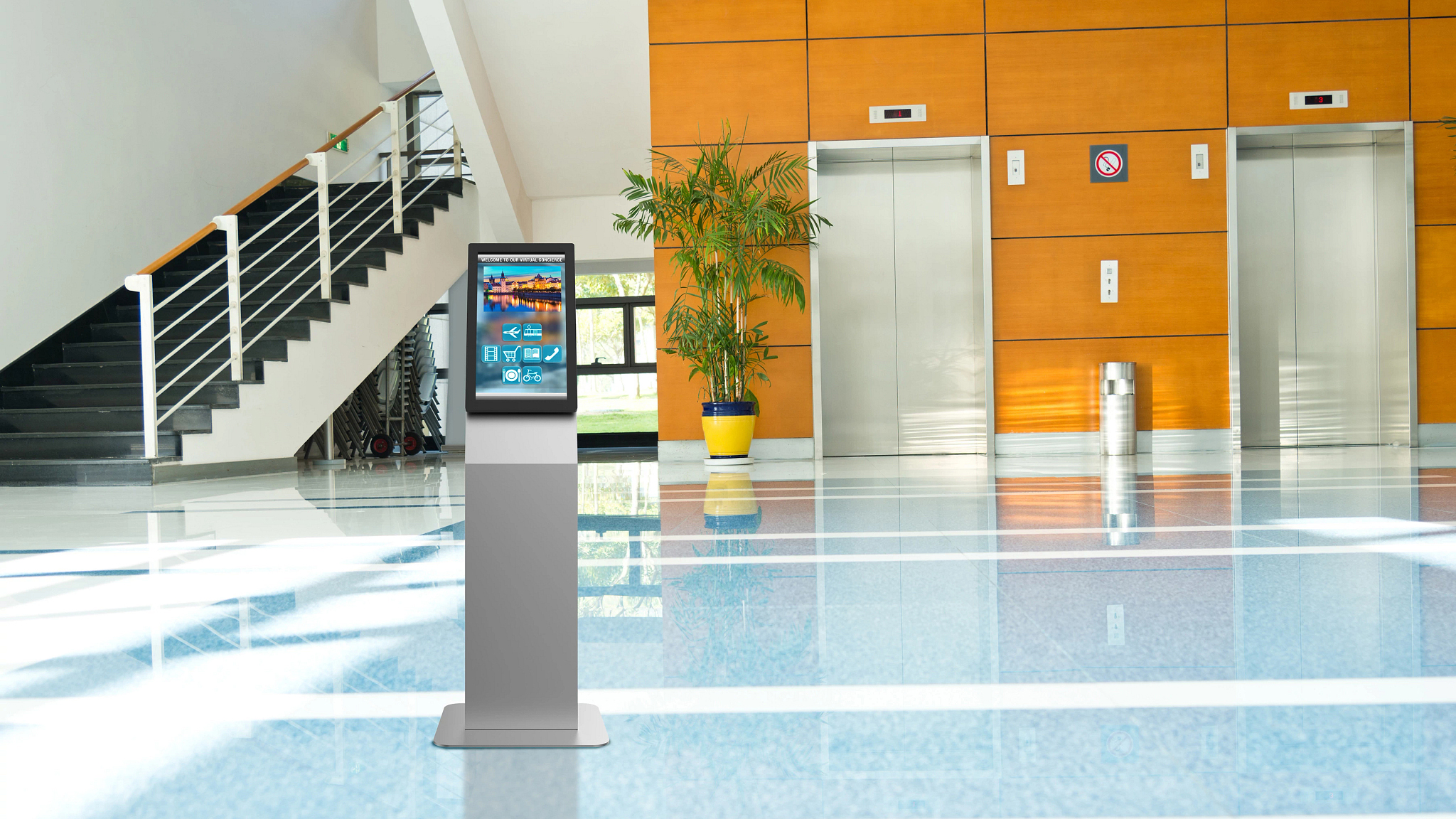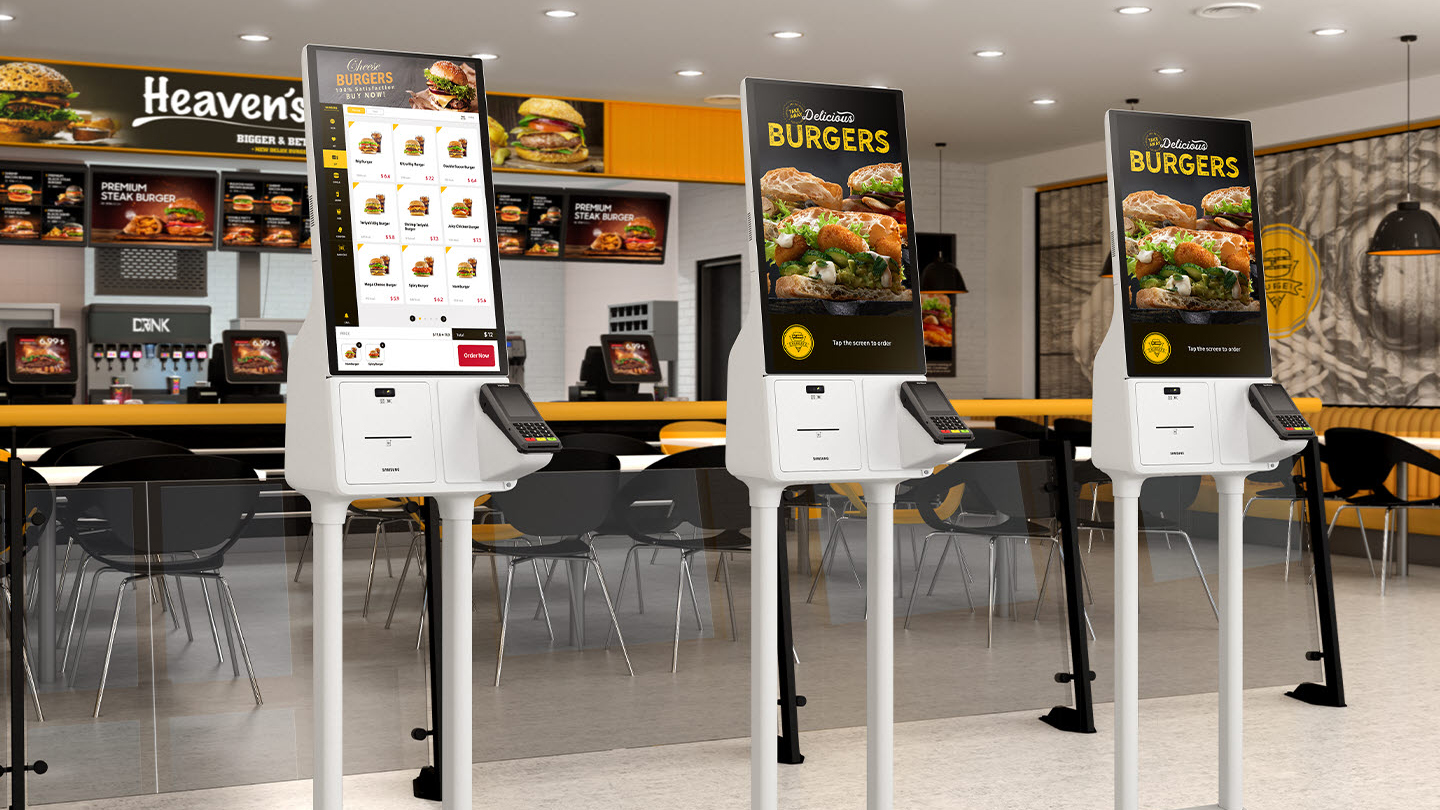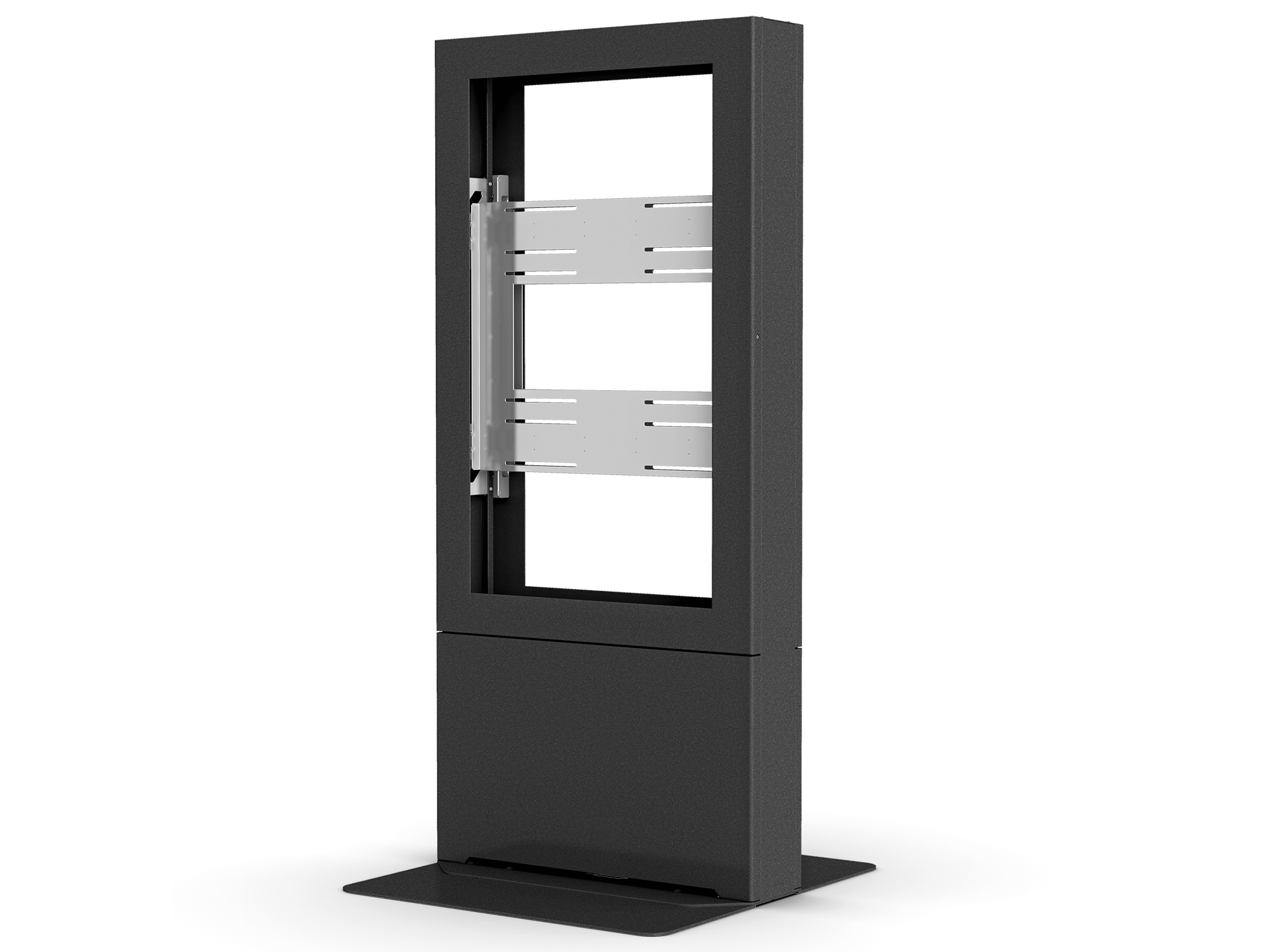In an ever-evolving consumer landscape, kiosks are helping to ensure efficiency, security, and even safety during the ongoing pandemic. Kiosk offerings run the gamut to cover most use cases and settings, from all-in-one models to modular systems. Tech innovations include screens with antimicrobial coating and shatterproof film, contactless ordering, and improved payment capabilities.
“The pandemic has absolutely changed the use of digital signage, with the most significant change being the uptick in use of videoconferencing. With our inability to travel, network in person, and keep in contact with customers, peers, family, and friends, videoconferencing via FaceTime, Zoom, WebEx, and other platforms has become commonplace. Additionally, with organizations that are using digital signage, we have seen improved analytics that are allowing businesses to mine and evaluate historical customer data to deliver effective and targeted personalized content,” said Rob Meiner, CTS, technical sales engineer, Peerless-AV.

Changing Landscape
With pandemic considerations making users uncomfortable about using touch interactive displays, the industry is also becoming more reliant on autonomous AI to help with the execution of functions and tasks, noted Meiner.
“Retailers, QSRs [quick service restaurants], hospitality businesses, and others have integrated mobile connectivity into their signage solutions, allowing people to interact with the information and data displayed on a display” via their personal mobile device, Meiner explained.
Luke Westin, senior product manager at Chief, also has some thoughts on the pandemic’s impact and suggested it has only heightened the need for kiosks. “Digital signage is definitely expanding—both indoor and outdoor. The need to elegantly enclose display technology is only going to grow, whether it be advertising, menu boards, automation, virtual reception, or wayfinding. All these applications will grow to accommodate communities that are now more acutely aware of health, safety, and security in public spaces. Importantly, digital signage can help make these spaces comfortable and convenient for everyone to navigate again.”
Social distancing and changing levels of use are pushing some manufacturers to amplify the customer experience.

“Kiosks will continue to increase in popularity for a multitude of reasons, including ease of use, adaptability, and their role in perfecting the customer experience for various industries,” added Mark Quiroz, vice president of marketing, Display Division, Samsung Electronics America. “The challenges of a distanced world have certainly fueled our design efforts to introduce products that are safe, secure, and easy to use. The digitization of the retail world and other industries continues to inspire and motivate us to think outside the box and to explore not simply what kiosks should be but what they can do. Creativity in this sector will be the key to developing products that stand the test of time and pave the way for more inventive solutions.”
[ Touchless Systems: Manufacturers Discuss AV's Latest Trend ]
Growing Trends
Peerless-AV’s Meiner shared some recent observations and trends. One is the notable increase in self-service kiosks that allow customers to have one-on-one conversations with off-site customer care representatives.
“According to a recent study on checkout lines, 69 percent of shoppers said long lines were the most irritating part of shopping,” Meiner said. “That beat out high prices (66 percent) and inventory being out of stock (65 percent). Eighty-four percent of those customers said watching digital displays helped them pass the time while they waited. With self-service, businesses can offer lower perceived wait times. Long lines are enough reason to leave a business or establishment. Therefore, any businesses should be investing in points of sale or offering self-checkout—anything to keep long lines from chasing off customers. People have a much easier time waiting in line when there’s something to take their mind off the actual wait.”
Some airlines are already using this technology, giving travelers the option of videoconferencing with a representative rather than using chat, email, or a telephone call to solve a problem, Meiner noted.
“The best part of a solution like this is that it allows customers to help themselves. Studies of customer feedback show that customers prefer self-service over working with an employee. In addition, self-service is the fastest and most cost-effective way to customer support,” he said. “Digital signage engages customers without requiring employee interaction. As a result, customers get the information they need to make a purchasing decision,” and employees’ time is freed up to focus on helping in situations where a customer service agent can make the most impact.

AI continues to be another game-changer. “With the use of AI, display content can be changed at a moment’s notice, creating a completely new innovation for kiosk usage. With networked digital signage, content in numerous stores located throughout the country can all be changed at the same time from a single remote location,” he said. “If a business wants to advertise a new product or announce an upcoming sale, they can create an ad and deploy it across all locations at the same time. While one of the benefits of digital signage is the capability to quickly implement new sales, offers, and products, it’s also the best way to keep brand messaging consistent across locations. The concept works in reverse, too. Operators can quickly pull offers completely or retool their marketing efforts without going through the lengthy and costly process of removing printed material and creating new material to replace it.”
Meiner believes that analytics will continue to play a large role in kiosk innovation. For example, a display that allows shoppers to check inventory can increase engagement and deliver analytics about which products are searched for the most. If sales numbers aren’t consistent with this interest, it might be time to lower the price or otherwise improve a product’s perceived value. Without customer data gathered by kiosks or other interactive signage, interest in a product would not be apparent if customers left the store without buying it.
“Displays can now be outfitted with video cameras that report a whole host of metrics,” said Meiner. “These can include people count (or impressions), dwell time, interaction time, demographics such as gender and age, emotional sentiment, recurring visitors, content touches, football traffic, and heat maps.”
Meiner warns that even with increasing availability of self-service kiosks, there will always be a subset of customers who prefer to work directly, face-to-face, with a human. “This desire for human interaction will continue to exist, especially for small and medium-sized businesses,” he said.
Future Outlook
What does the future hold for kiosks? And how will they evolve over the next few years?
“Kiosks need to look great and seamlessly blend into a variety of environments. The ability to respond to customizations is key when it comes to aesthetics and other features,” said Chief’s Westin. “Beyond aesthetics, I see innovation from manufacturers that have thought through the installation and servicing process. Quick installation for large roll-outs, servicing or troubleshooting are important value-add features that continue to save time and money beyond the initial purchase. As far as outdoor goes, there will be major innovations taking place with displays and media players. We are also seeing outdoor displays migrating toward System on Chip [SoC] and Smart Signage Wi-Fi options, reducing the need for climate control of media players. As the need to support more signage outdoors increases, so too will the demand for outdoor-rated media player devices.”
As well as growing use in an increasing number of applications, especially in the outdoor space, Westin anticipates that display technology will become even less dependent on media players and expects to see further integration of accessories like cameras, card readers, speakers, and microphones.
“Technology will continue to advance in outdoor rating of kiosks,” he concluded. “Direct view LED is another technology that can be applied in kiosk and enclosure applications.”
Click here to read more stories from the August 2021 issue of SCN.
Kiosk Technology and Installations
Samsung Unveils Kiosk for Contactless Ordering and Payment • Samsung’s all-in-one Kiosk includes a 24-inch HD display, receipt printer, credit card terminal, scanner, and NFC tap pad, with self-ordering kiosk software from GRUBBRR.
Touchless Systems: Manufacturers Discuss AV's Latest Trend • In a flurry of innovation, industry leaders have been developing new products and solutions to help facilitate a healthy return to corporate and college campuses, hospitality, and more. We reached out to manufacturers to learn about the solutions they’re working on for this new, touch-free world.
Privacy and Digital Signage • With AI and data analytics at the heart of today’s digital signage platforms, maintaining consumer and visitor privacy is becoming an increasingly important issue.
Samsung, Partners Bring New Display Tech to D.C. Landmark • Samsung’s dynamic smart signage, coupled with content driven by New Tradition, provides commuters and visitors up-to-the-minute travel, weather and safety information at Washington, D.C.'s historic Union Station.
Why Digital Signage and Wayfinding Technology Are Critical in a Post-Pandemic World • 22Miles' Tomer Mann discusses the importance of digital signage technology in the era of COVID-19.